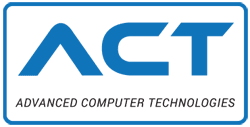In virtually every business environment, a wide variety of personal and ‘approved’ devices are used throughout the day. This includes computers, tablets, smartphones and other Wi-Fi enabled devices. Each piece of equipment puts your entire network at risk if it is not properly secured and managed.
You have a responsibility to protect the private information you collect about everyone you interact with. Whether it’s your employees, customers or business providers, you likely store an incredible amount of sensitive information, such as social security numbers, credit card numbers, and other sensitive data. A system breach could result in hundreds or even thousands of individuals having their privacy and finances compromised. That is why defending against ransomware and viruses is a top priority among businesses today.
Ask yourself:
- Do you have policies and procedures in place to secure every device you provide?
- Are you sure you have adequately secured your network?
- Are you confident all your data is backed up daily, both on-site and off-site?
- If there is a system failure or breach, do you know how you will identify and stop it? And are you confident your operations can be brought back online without loss and in a timely manner?
If you cannot confidently answer ‘Yes!’ to these questions, keep reading.
It is highly recommended that businesses of every size have multiple layers of protection in place to secure their data and defend against the latest risks. Below is an example of ACT’s 12-Step Security Plan that is implemented for all clients. These are areas you should address within your own companies – at a minimum:
- Ensure all devices – desktops, laptops, smartphones, and tablets – are running the most up-to-date antivirus software available.
- Upgrade your firewall with Unified Thread Management Features (UTM).
- Install the latest security updates/patches to your operating system.
- Implement a cloud-based email security system to capture spam, block phishing scams, and stop threats before they ever make it to your mail server.
- Implement a secure DNS solution that can protect your business beyond its perimeter.
- Enforce strong password policies, encouraging passphrases, forcing employees to change passwords periodically, and not allowing them to reuse past passwords.
- Use multi-factor authentication (MFA) for an extra layer of network security. Even if your passwords are stolen, MFA should prevent hackers from gaining access.
- Implement a hybrid solution that combines an on-site backup system that synchronizes real-time with a secure cloud-based storage system, providing maximum protection and quick restoration in the event of a disaster.
- Periodically test the backup system so you are 100% certain it’s working.
- Document a disaster plan to ensure your entire team understands what to do in the event of catastrophe.
- Implement network security policies that limit access to certain parts of the network.
- Educate staff, vendors, and anyone else who accesses your network on what they can (and cannot) click or download.
Ensuring the areas above are addressed on an ongoing basis should keep your company’s network and data secure. To learn more about this approach and how it can help protect your business, contact us today.
